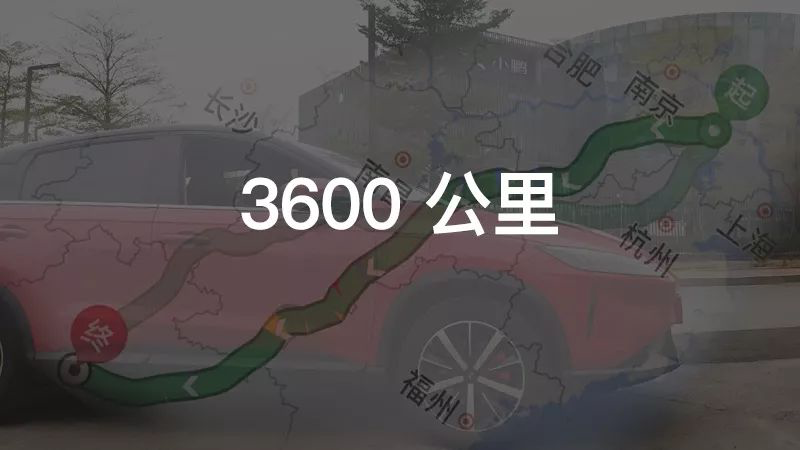*Edit note: This article is written by a member named Big Steamed Bun Li in the 42 community.
The reason for this trip is very pure. When our child went to Hainan with the grandparents in December, we had to go to Hainan to meet him during our holiday.
However, we had a different idea this time: driving my own XPeng G3, self-driving to Hainan. First, we can enjoy the beautiful scenery along the way, and second, we can save the expensive airfare. Two birds with one stone, why not? Let’s go!

At that time, I was worried because many people said that charging a pure electric vehicle on the road is not convenient. Moreover, my first edition XPeng G3 only has a NEDC cruising range of 365 km. Considering the winter and full load conditions, there might be many inconvenient scenarios.
But then I thought, life is always lived in the present. Life is often like that. Once you make a decision, you must do it. There are too many things that are missed forever just because you didn’t do it at that time.
At that time, I immediately told my lover my idea. After hesitating for a moment, she agreed.
Later, I discussed this matter with two friends, and they also happily agreed. We decided that we must have a journey towards warmth in 2020.
However, regardless of the way we choose to self-drive in Hainan, it is not just about having passion. Especially for pure electric vehicles, there are still many preparations to be done.
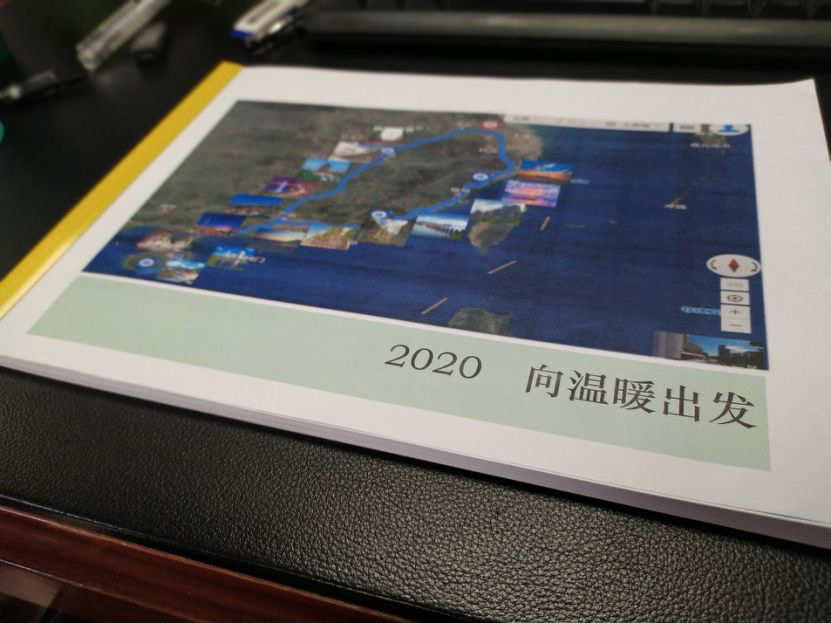
The first thing we need to do is to plan the charging route. In order to plan the charging route along the way, in addition to the charging plan function that XPeng provides, we also downloaded “Jiadian”, “E Charging”, “Star Charging”, “Teld” and “Shunyi Charging”. In addition, we also followed the public account “Guangdong Tianlu”.
After referring to multiple maps and charging resources, our planned route is roughly as follows: Depart from Jiangsu, go west along the south bank of the Yangtze River, and pass through Nanchang, Guangzhou, Haikou, Wenchang, and Wuzhishan to Sanya. On the return journey, depart from Sanya, pass through Haikou, Guangzhou, Chaoshan, Xiapu, Ningbo, and Jiaxing, and finally return to Jiangsu.
In fact, charging along the way is not too challenging. As long as it is within the coverage of the national grid, there are charging piles at almost every service area on the highway. There was only one place that we were worried about at that time, which was the area covered by Southern Power Grid in Guangdong Province.Some charging stations in some areas are far apart, sometimes over 200 km apart, and my XPeng G3 has a range of 365 km. In winter, with a full load and air conditioning on, the estimated range is around 200 km, and such an extreme journey is very risky and may cause a breakdown halfway. Therefore, planning for high-speed charging is necessary. However, the final result is that the G3’s endurance is still powerful, and it did not leave me stranded halfway.
Another aspect is the driving experience all the way, which gave me the greatest experience – XPILOT is amazing! Almost all of the high-speed journey was using XPILOT except when I felt drowsy after eating, and stopped at a service area to rest. Sincerely, it was not tiring at all. Therefore, don’t ask if XPILOT is easy to use, it is almost like a substitute driver on the expressway. At first, my companions didn’t trust it, and insisted on driving themselves. However, after trying XPILOT once, they almost couldn’t stop using it, and praised it as amazing.
With XPILOT, we traveled 3600 km on this trip, and even with rest stops for charging, it was not as tiring as imagined. So, who says the XPeng G3 first edition is not suitable for a long-distance self-driving tour?
Day 1: Changzhou, Jiangsu Province -> Nanchang, Jiangxi Province
Considering that this long journey involves a lot of luggage – 3 carry-on bags, 1 27-inch travel suitcase, 3 backpacks, and four adults, it was basically close to the G3’s maximum load capacity. Therefore, charging was planned every 150-200 km, and the reserve power needed to be able to reach the next charging point.
As it was foggy in Changzhou when we set off in the morning, we couldn’t drive fast on the high-speed expressway along the Yangtze River. We traveled for about 1.5 hours to the Heyeshan service area. The charging station here is located behind the service area. Through checking the comments on the charging APP, it was found that charging at charging station No. 4 was the fastest. After charging, it was proven true – approximately 60 kW can reach 75% capacity.
There are also cameras monitoring the parking spaces for charging here, which is good. In contrast, there were empty charging spaces, but cars had to queue for refueling.After charging to 90% of the battery, I drove a distance of 324 km to the Tianmen service area, which was 160 km away, with assisted driving speed set at 110 km/h, air conditioning set at 24 degrees, and fan speed at level 2.
In the Tongling area, there was a serious traffic jam of about 6 km, and after arriving, there was still 60 km of range left, with a range ratio of nearly 1:1.6, a considerable loss.
At the Tianmen service area, I originally planned to have lunch, but now there are too many infectious diseases, so I ended up eating instant noodles at the entrance of the charging station. After a full meal and a fully charged battery, I charged up to 320 km and set off for the Xiangou service area 170 km away.
This charging experience made me a little nervous because of heavy rain on the road, which led to a sustained increase in vehicle energy consumption, up to 20 kWh/100 km.
Before arriving at the service area, there were only 20 km of range remaining, and the next service area requires an actual distance of 35 km. When the vehicle arrived at the service area, it was seen that there were many barriers, and at that moment, a song called “Liáng Liáng” was dedicated to Dà Bāozi Lí.
However, fortune favors the prepared mind. After passing the barriers and reaching a small fork in the road, I was able to drive into the service area. This was probably the most satisfactory charging station I have ever used. It has a large service area parking lot and 4 120 kW charging stations. The charging speed was stable, and there was only me in the huge parking lot, fully charging the battery. What is even more satisfying is the price, look at this price, 0.3 to 0.6 yuan, doesn’t it excite you? Are you satisfied?
It was so cheap that I couldn’t resist charging a little more, until reaching 340 km, and then drove directly to the Lushan service area. I didn’t understand why there were toll booths when entering the Lushan service area. Didn’t they cancel the toll booths at the provincial border? I don’t know, and I dare not ask.
Actually, there was no need to charge at the Lushan service area, as I could drive directly to my destination, but I thought I might need to use the car after reaching Nanchang, so I charged a little more at this last service area before getting off the highway.
During charging, I saw that there were famous brand restaurants such as Yonghe Soy Milk and McDonald’s at the Lushan service area, but the prices were really too expensive, nearly three times the market price. I could only swallow my saliva and continue on my journey.Finally, on this rainy night in Nanchang, I arrived.
In Nanchang, eating fen is a must-try. Look at the pace in this old famous shop. Wow, the food is delicious and the people are beautiful.
In summary, from 6:30 am to 6 pm, a total of 11 and a half hours, overall met expectations, but I’m definitely slower than a gasoline car. Good thing it was like a mandatory break though, which is great. The entire journey was made with ETC, tolls were 220 RMB, which is less than what’s displayed on Baidu Maps. The charging fee was around 100 RMB, really great!
Resting in Nanchang for a day on the 2nd day, I’ll skip that and go straight to the 3rd day.

Day 3: Jiangxi Nanchang → Guangdong Guangzhou
From Nanchang to Guangzhou, a distance of about 800 km, is the longest part of this trip.
Because charging piles are not widespread enough in Guangdong, especially in the northern region, this is also the most challenging part of the trip.
After breakfast at 7:30 am, I left Nanchang and began to head towards Guangzhou at full speed. By this time, the epidemic had become quite severe, and measures were being taken across the country. To be honest, we were quite worried.
But considering that the epidemic in Hainan Province should not be particularly serious, we decided to go there as planned. Due to the fact that the car was fully loaded with 4 adults and 4 large suitcases, the weather was rainy, and the highway was cold, we decided to adopt a conservative strategy of recharging every 150-200 km.

First, we arrived at the Zhangshu Service Area on the Shanghai-Kunming Expressway.
This service area still has the standardized four 120 kW charging stations of State Grid. XPeng’s energy replenishment speed can basically maintain a peak value of 60 kW to 70% and then drop to 40 kW to 85%, and 20 kW to 90%.
Considering efficiency, I generally leave after charging to 90%. The bathroom at this service area is pretty good, with an antique style and warm water soap.
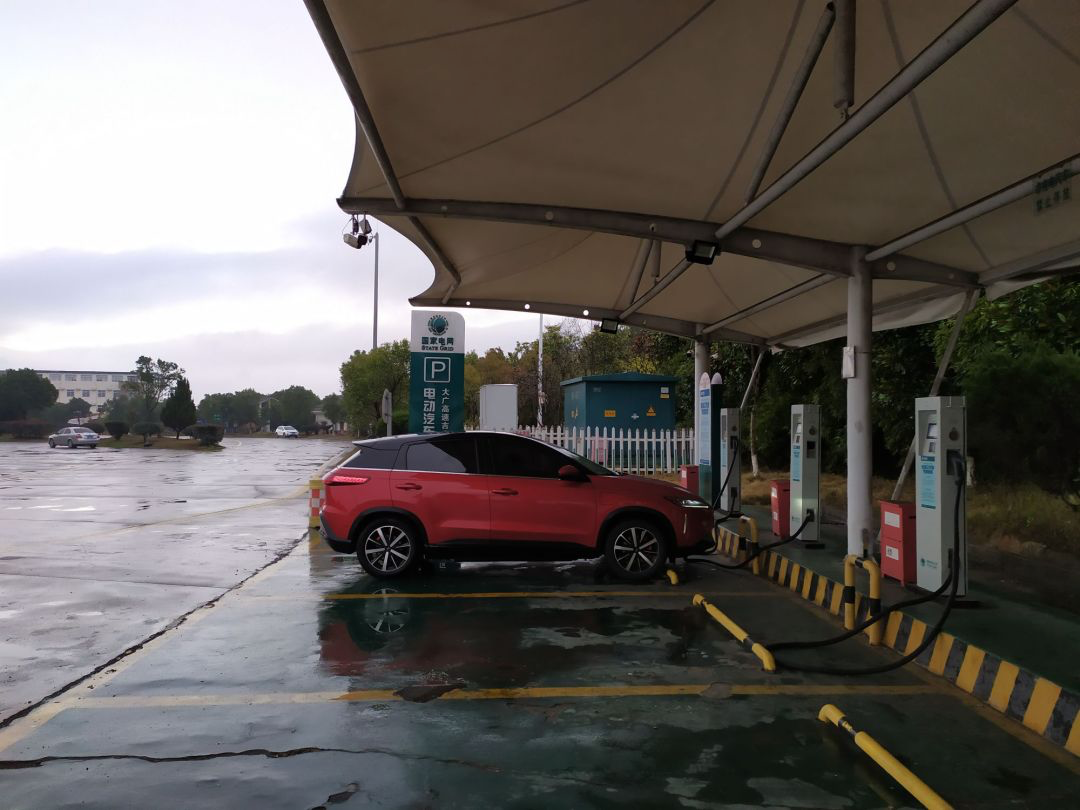
The next stop was the Jian Service Area on the Daguan Expressway. The main reason for this stop was because several people on the car needed to use the bathroom. As we were already there, let’s take a break and recharge the car. The services areas in Jiangxi Province charge 1.8 RMB per kWh, which I think is quite expensive. I really miss Anhui’s 0.6 RMB per kWh.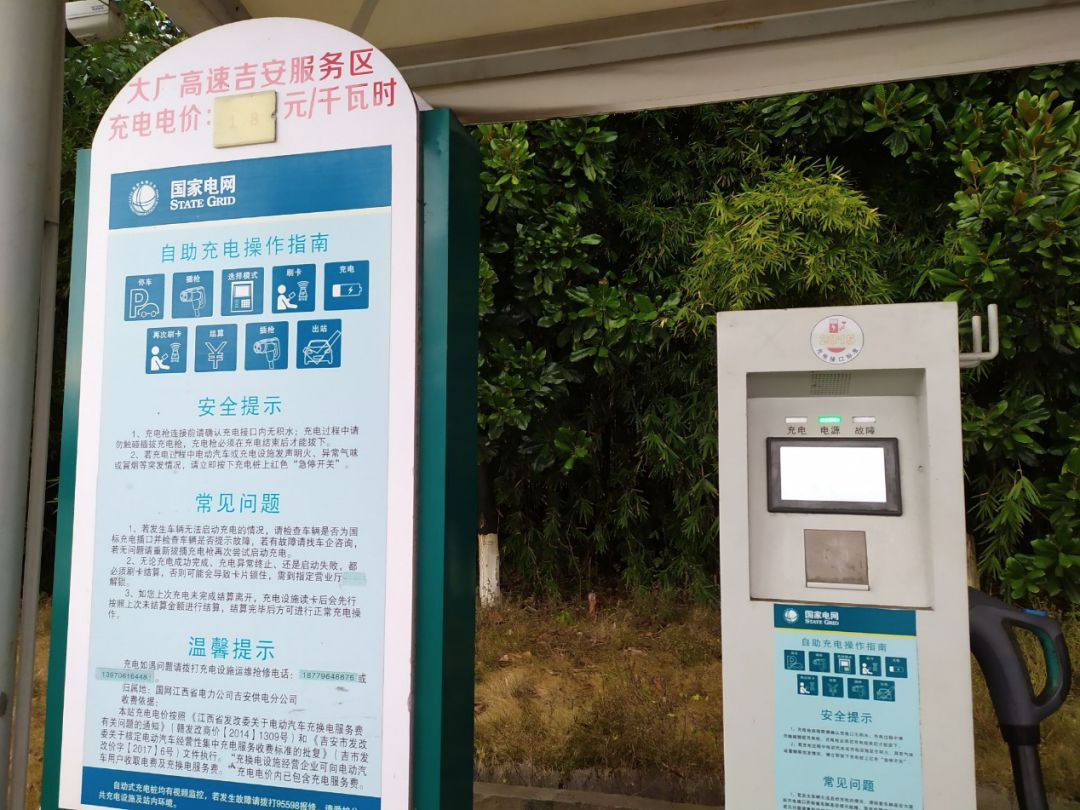
Moving forward, I arrived at the last service area in Jiangxi Province on the highway, which is Hengshi Service Area. This service area is very large. The characteristic of the service areas in Jiangxi Province is that the charging stations are all deployed at the corners behind the houses of the service area, along with rain shelters, making it appear very independent and quiet. The fat raccoon likes such scenes very much.
After recharging here, the fat raccoon planned to go to the city of Ganzhou to recharge before entering Guangdong Province.
Upon arrival at Ganzhou, I was surprised to find that the place where I chose to eat and recharge actually had XPeng Motors charging stations. Wow, it really is intelligent travel over a thousand miles, and we will eventually meet each other. But when I saw the test drive car in the shop, it also blinded my raccoon eyes.
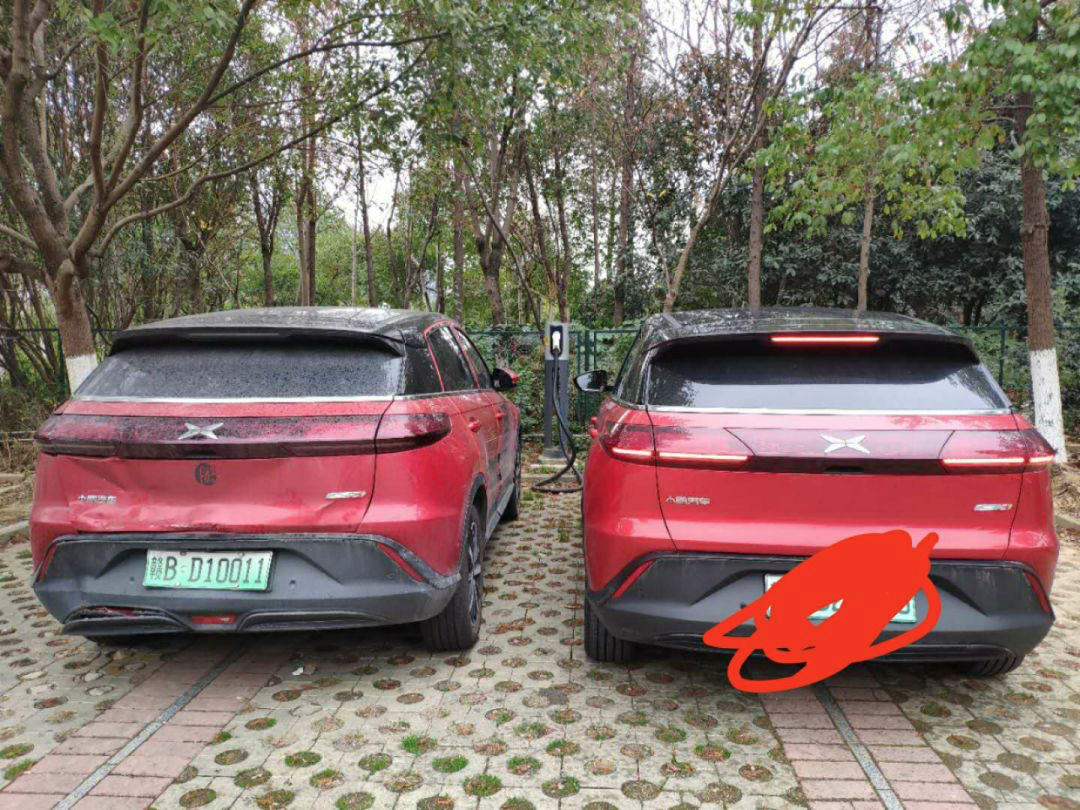
It seems that XPeng Motors in Ganzhou is receiving a lot of attention, and the test drive cars are indeed very busy. The charging station here has very good conditions, located beside the central park in the city, with a dedicated new energy car parking lot that is free to park.
Over a dozen Tesla Superchargers are arranged in a straight line, which feels pretty good. While charging, a little white XPeng Motors car arrived, and the raccoon was happy to meet XPeng Motors friends in Ganzhou.
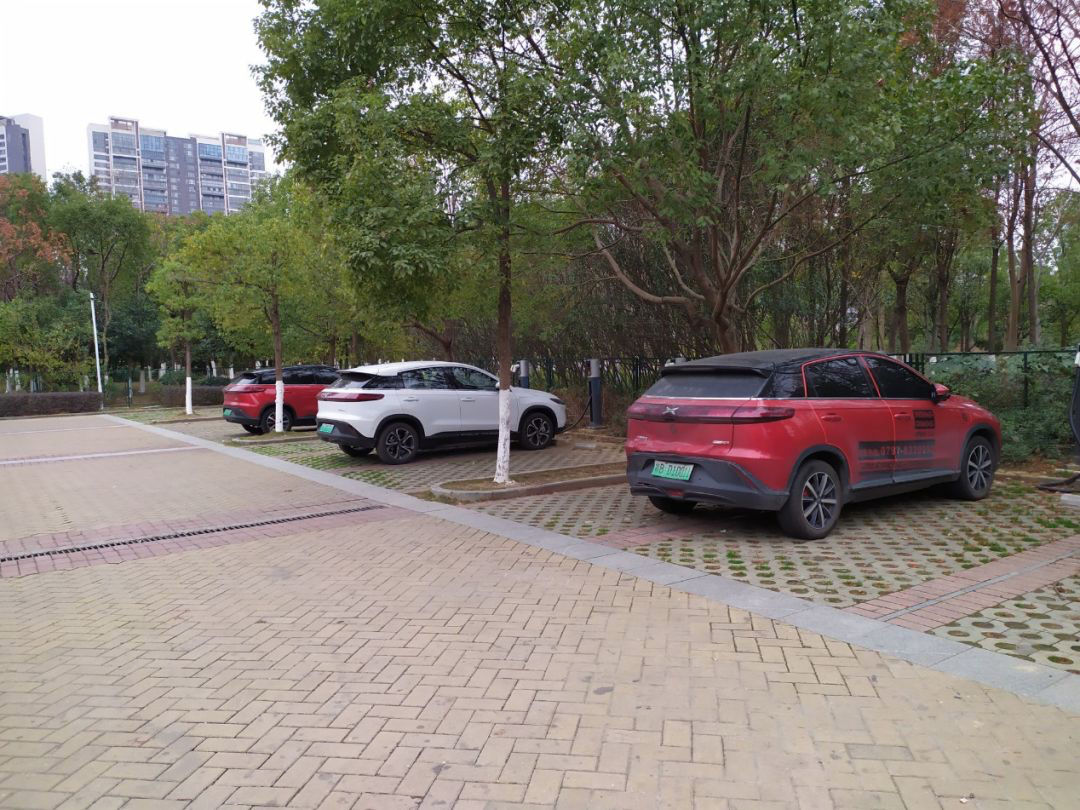
After having a meal in Ganzhou, I continued on to the next stop. There were no charging stations in the service areas along this section of the highway, with a distance of nearly 300 km. XPeng’s car displayed a charging station in Shao Guan East on the on-board computer, but both the XPeng APP and the Add-E APP indicated that it was not available for charging.
Therefore, I decided to exit the highway and recharge. This time, I chose the Southern Power Grid charging station behind the government building in Shixing County, mainly because it was the New Year holiday season, and not all charging stations may be open. Government agencies generally have someone on duty.
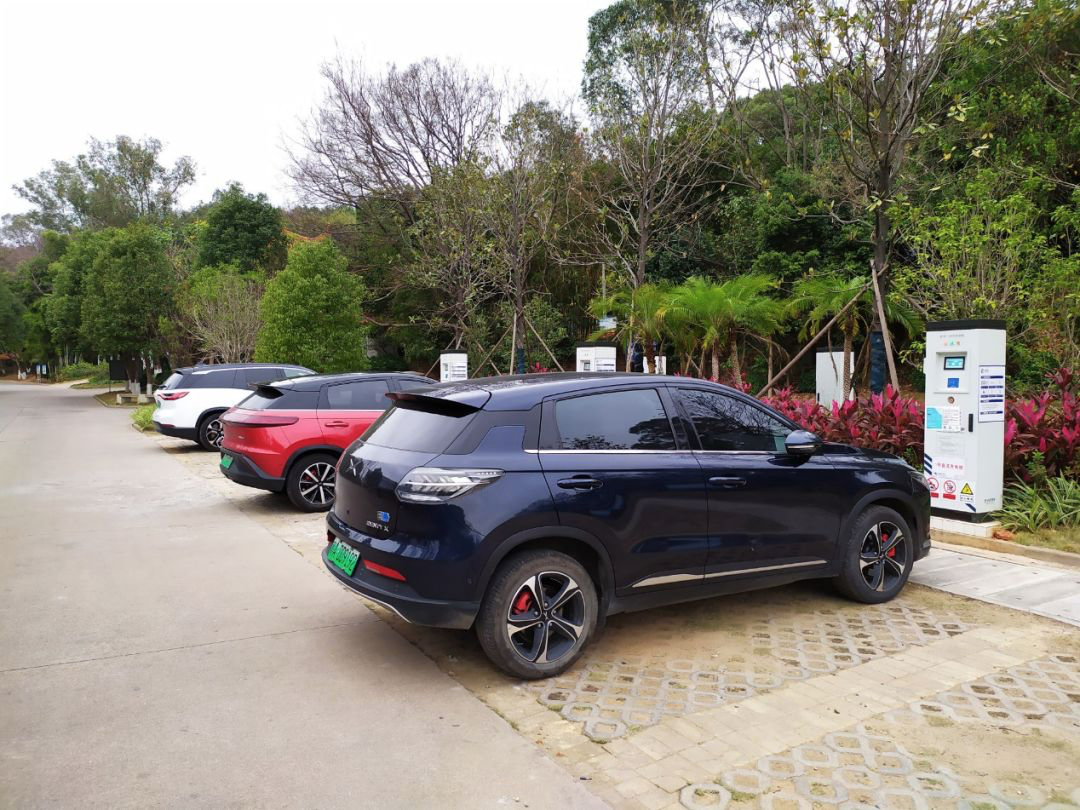
Upon arrival, I was delighted to find that all the charging stations were working, and I also saw XPeng Motors version 1.0. A handsome young man was also charging his car here. The environment here is very good, with a park behind where you can hike, and recharging while exercising feels really nice.
This was the first time I used the Southern Power Grid’s fast charging, and the efficiency of the 120 kW charger is noticeably lower than that of the State Grid. The highest power output can only reach about 55 kW, and now that they have changed to a new APP, the operation is more complicated.While my car was charging, I walked around the government square. It was already 11 pm on New Year’s Eve and no one was on the street. I guess everyone was having their family’s New Year’s Eve dinner at home.
After completing my charging, I continued my journey and decided to take the Le Guang expressway since there are 8 new charging stations available for maintenance.
The first charging station on the Le Guang expressway was Yinghong. It seemed that this station had just finished construction in January. It is a 120 kW supercharging station operated by Guangdong Expressway Group. However, just like in the southern power grid, my XPeng car cannot reach the peak of 60 kW here.
After charging here, I drove on to the Zhukong Center Station in Guangzhou city to have my XPeng charged. It seemed that this station had been around for a while and it was still easy to use. I simply needed to plug in my car, without any need to scan a QR code, and there were no gas cars occupying the charging spots. Plus, with a 50% discount, it was really convenient and affordable.
Skipping the 4th day for rest in Guangzhou, I moved on to the 5th day.
Having arrived in Guangzhou, I, as a XPeng owner, just had to check in at the XPeng headquarters, even though the building was vacant at the time. Despite the risk, I still took a photo there.
While preparing to depart for Hainan on the next day, we received a call from the Culture and Tourism Department of Haikou City which advised us to cancel our hotel. Although it was not mandatory, we decided to follow the arrangement of the government departments and immediately returned to Jiangsu.
Considering the pandemic situation, we decided to take the coastal route back home. Although it was longer, the coastal region had fewer Covid-19 cases and was more stable. We therefore planned to travel from Guangzhou to Chaozhou on the first day, from Chaozhou to Ningde on the second day, and from Ningde to Changzhou on the third day.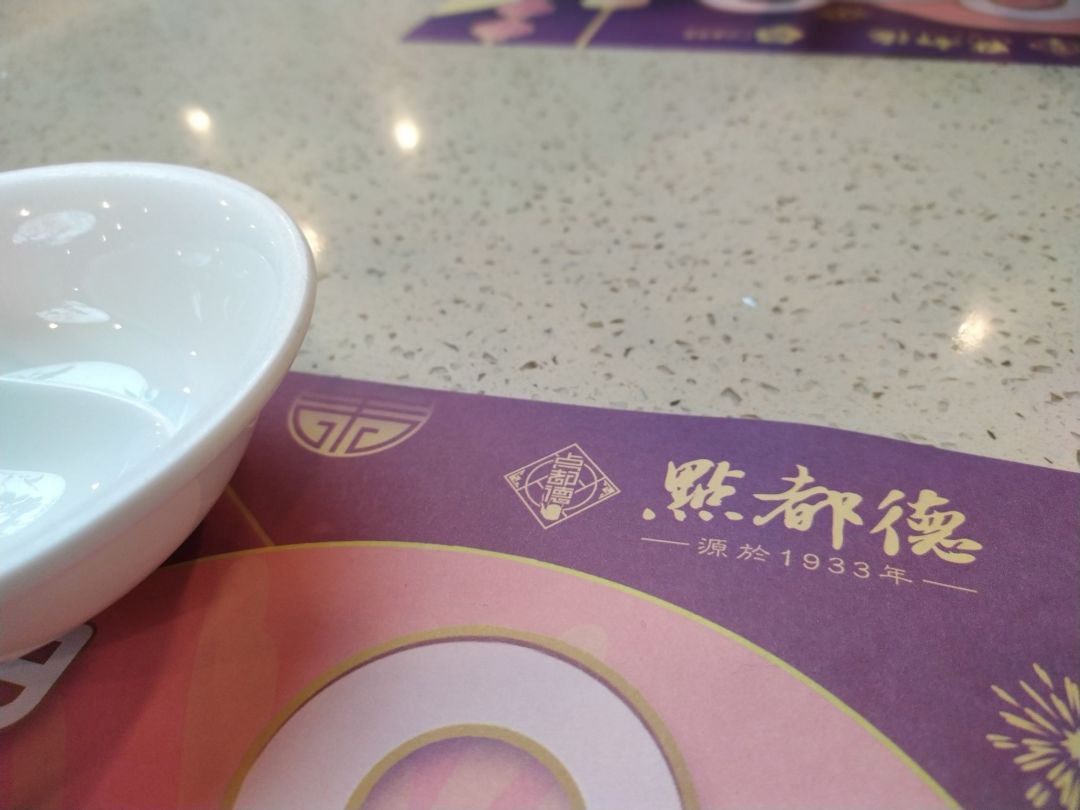
In the morning, I got up early and had breakfast at a famous Guangzhou dim sum restaurant, then set off by car. Before setting off, I charged my car at a XPeng supercharging station and took advantage of the half-priced charging. When can we have such good supercharging stations here?
Hastily setting off, the first stop was XPeng’s supercharging station in Huizhou, which is probably the farthest XPeng supercharging station from Guangzhou.
This supercharging station is located in the automobile city of Huizhou, and it is relatively spacious. Next to XPeng’s supercharging station is NIO’s supercharging station. NIO’s supercharging stations are really increasing! I hope XPeng can work hard too.
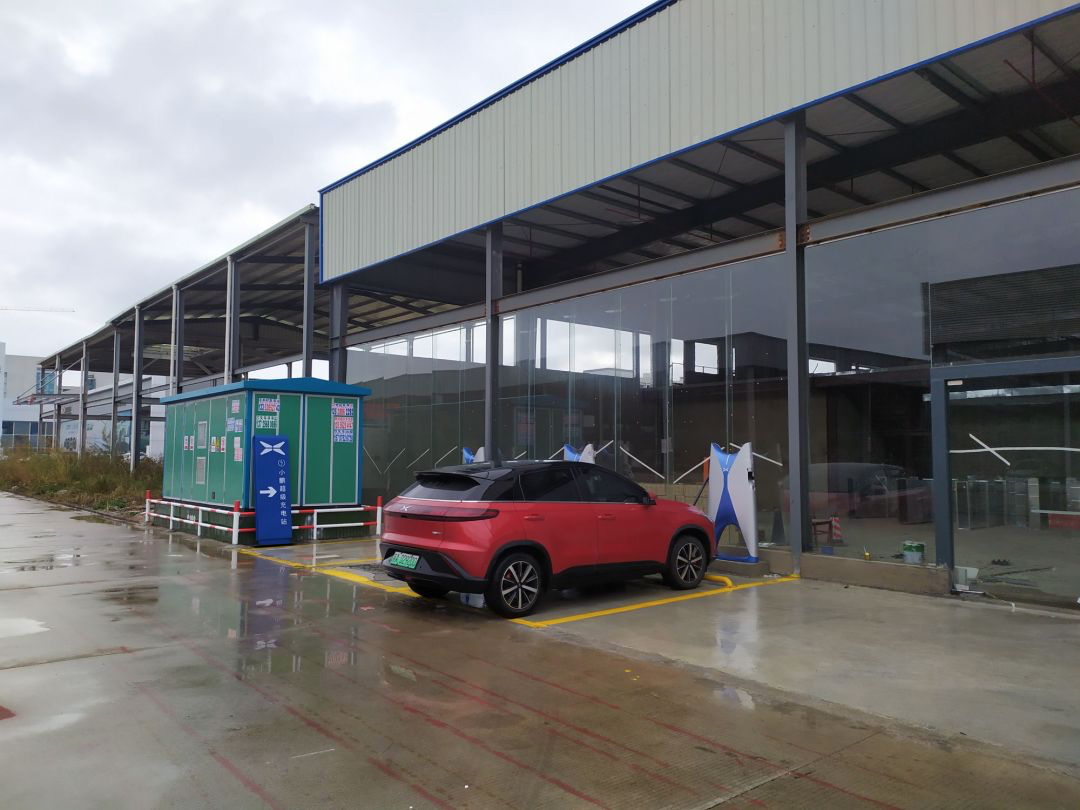
The charging efficiency here is basically the same as the State Grid’s 120 kW charging stations. It is also relatively empty here during the Chinese New Year, with no one around, so it is quite deserted when charging and there’s not much to do.
After fully charging, I continued on to the next stop. The second stop was at a service area on the Shenhai Expressway. This is also a 120 kW station for Guangdong Transportation. For some reason, the charging speed here is about 10% slower than State Grid’s. It felt great to charge here. The weather was overcast but sunny, and the little red car under the blue sky and white clouds was really beautiful.
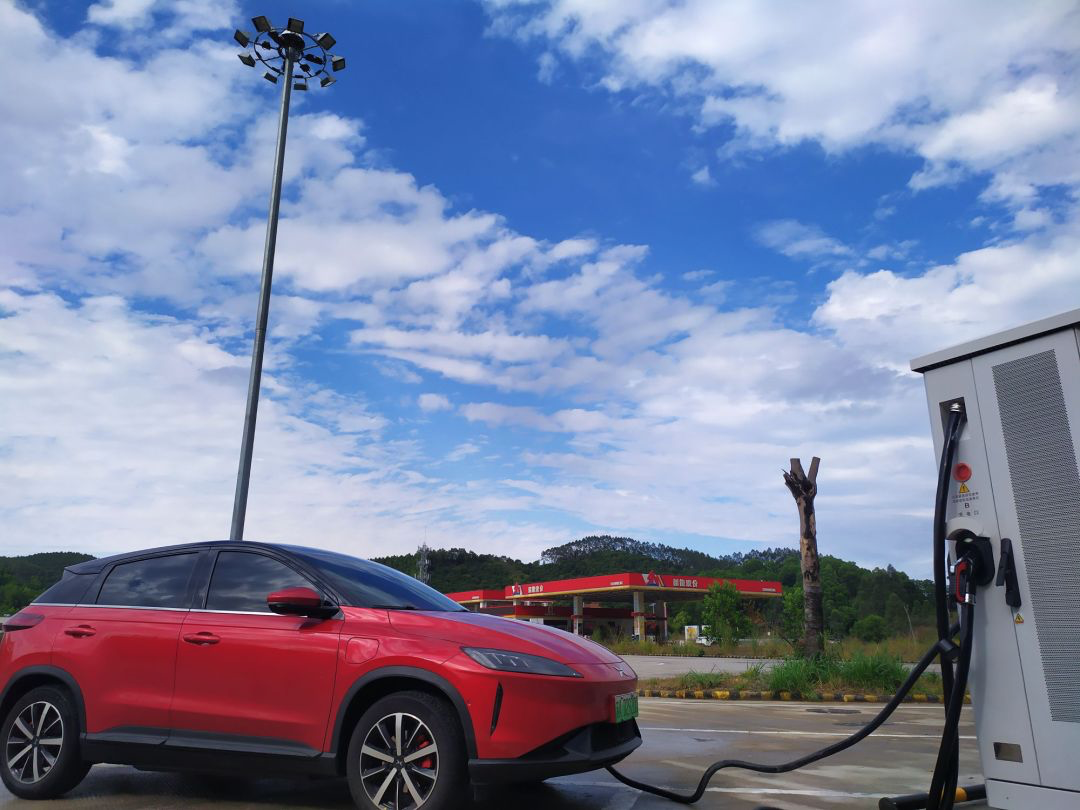
While charging here, I encountered a locked charging gun. XPeng was really helpful and provided me with a solution in a timely manner, which enabled me to unplug the gun and continue my journey.
Continued to speed ahead and finally made it to Chaozhou, the only city in Guangdong that has not been infected with the virus, just before sunset. Chaozhou is a very exciting city, especially the local fruit juice ice and beef balls, which taste really good.
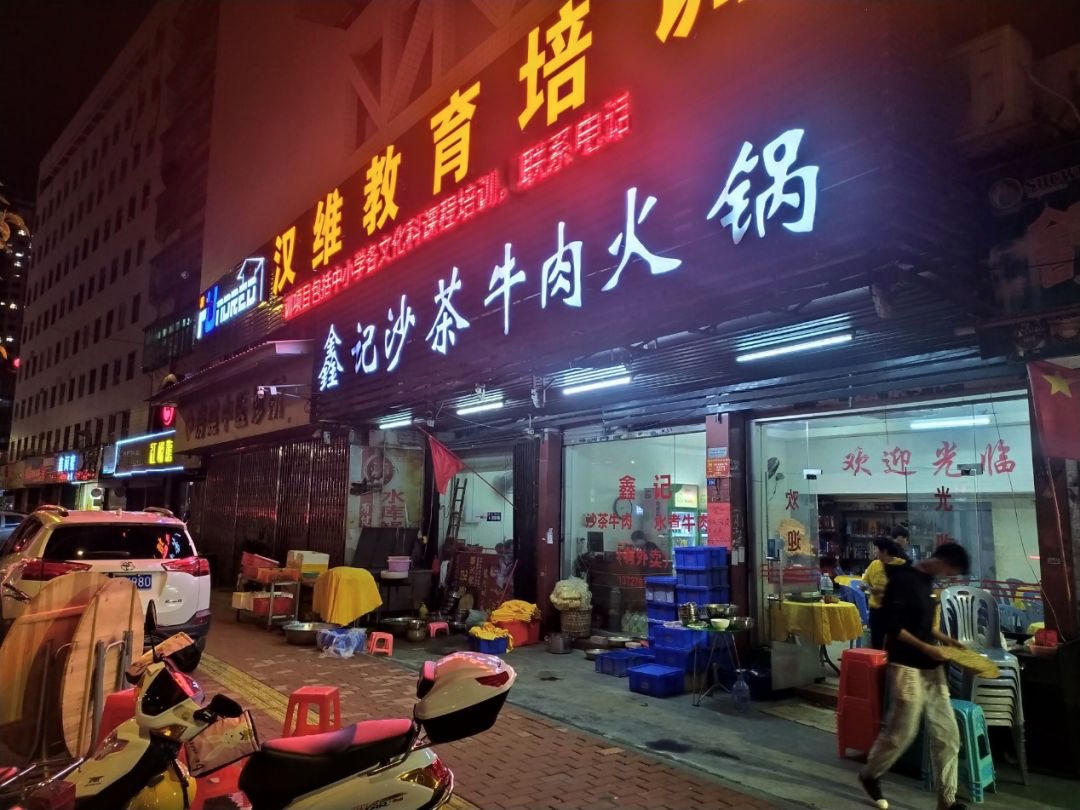
After eating and drinking our fill, everything was really great. Chaozhou left a super good impression on me, with beautiful people, sweet voices, good food, and a warm attitude. I really can’t understand what kind of fairyland this place is. In the future, I will definitely come back to Chaozhou!
Day 6: Chaozhou, Guangdong -> Fuding, Fujian
As the epidemic worsened, the taste of anxiety outweighed the taste of Chaozhou’s hotpot.
After discussing among the team members again, we decided to return faster and drive directly from Chaozhou City to Fuding City, the northernmost city in Fujian Province, tomorrow.Upon entering the border of Fujian Province from Guangdong, the highway was closed at the first service area and all vehicles were directed to undergo a temperature check. The inspectors wearing the shining emblem of the Communist Party on their chests deserve praise.
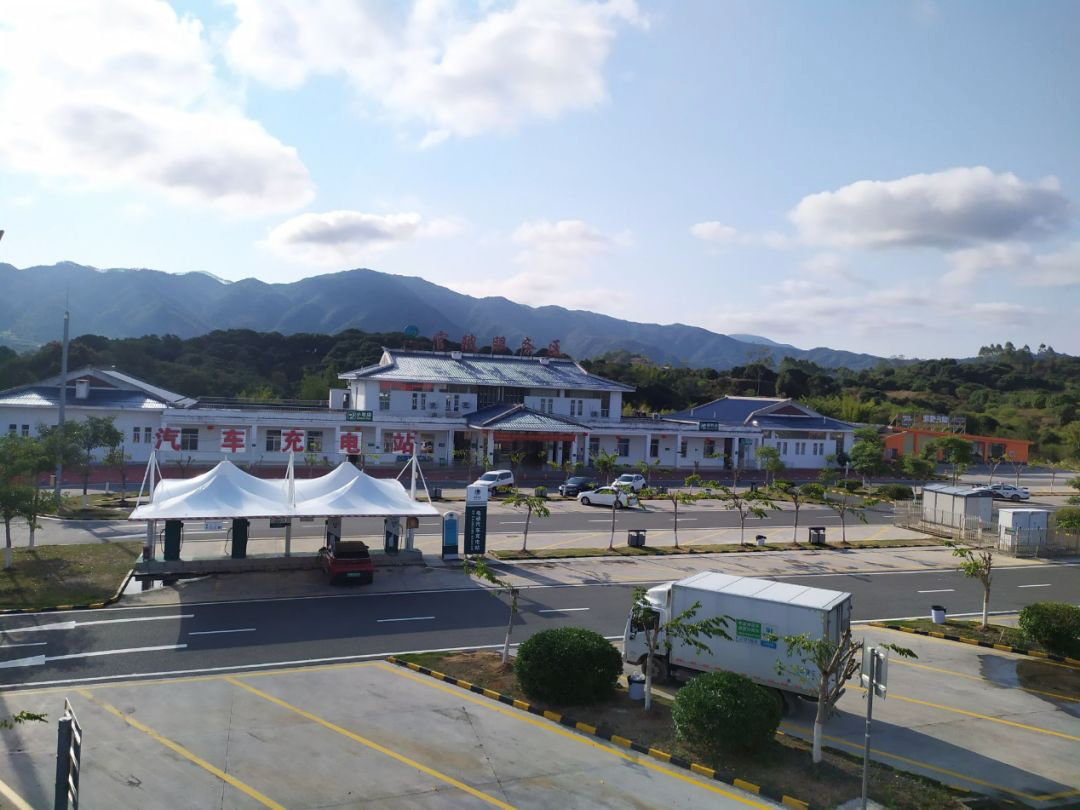
The official service area of Guanbi is deserted, but now that we have entered the region of the state grid from the Guangdong grid, the charging efficiency and reliability of the charging stations at various service areas have greatly improved.
The charging pile is still 120 kW, with a peak power of up to 65 kW, and it attenuates to around 40 kW at 72% and to 20 kW at around 85%, which is the highest charging efficiency.
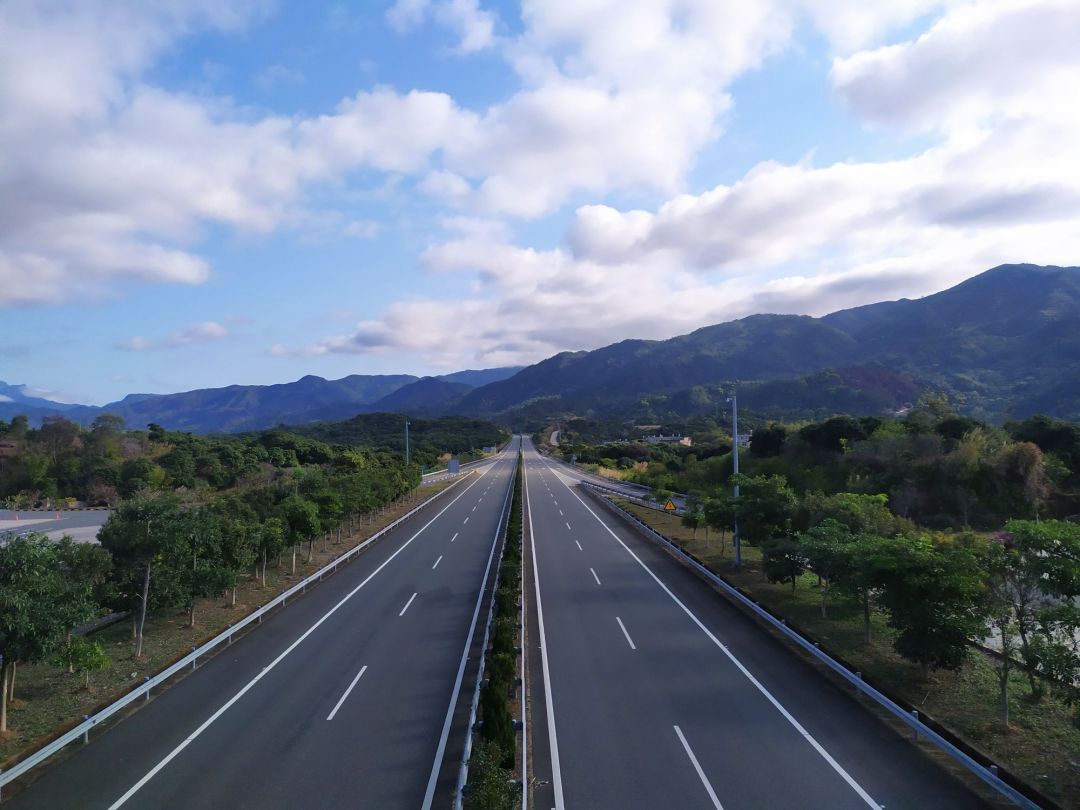
The highways in Fujian are very empty, almost without any cars. The XPeng G3 started the assisted driving mode and drove automatically all the way, feeling very comfortable and relaxed.
As the car approached Xiamen, the sky became bluer and the blue sky with white clouds was really beautiful. There were quite a few restaurants at this service area charging station, and we had hot fried noodles and dumplings here, which tasted pretty good without any price hikes during the holidays. Xiamen’s sky is especially blue. Here’s a photo to share.
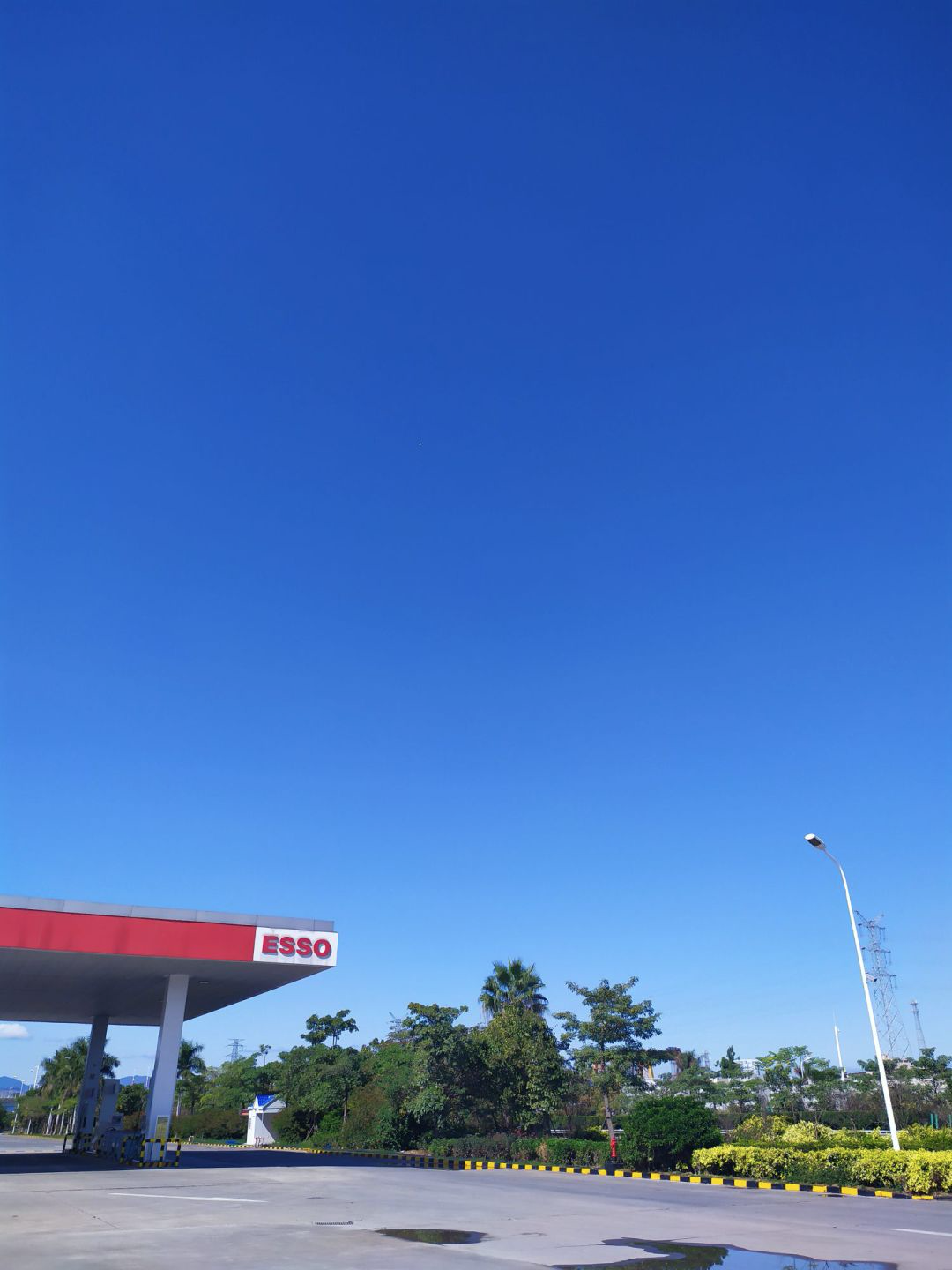
Let’s talk about energy consumption. Our car was always fully loaded with 4 people, 4 suitcases, several backpacks and some convenient bags of snacks.
At an appropriate temperature in Xiamen, the energy consumption under High-Speed Assisted Driving mode maintained at 110 km/h was around 19-20 kWh/100 km.
If manually driving and fully utilizing the regenerative braking, the energy consumption can be reduced to around 17-18 kWh/100 km. Unfortunately, due to the high humidity inside the car caused by the large number of passengers, the air conditioner had to continue running AC, which made the temperature less warm.
We quickly entered the territory of Fuzhou and came to the service area of Fuzhou, which is only one kilometer away from the sea. Unfortunately, with haste to get home, we didn’t have the chance to see the sea here. Interestingly, this service area still has Sand County snacks.
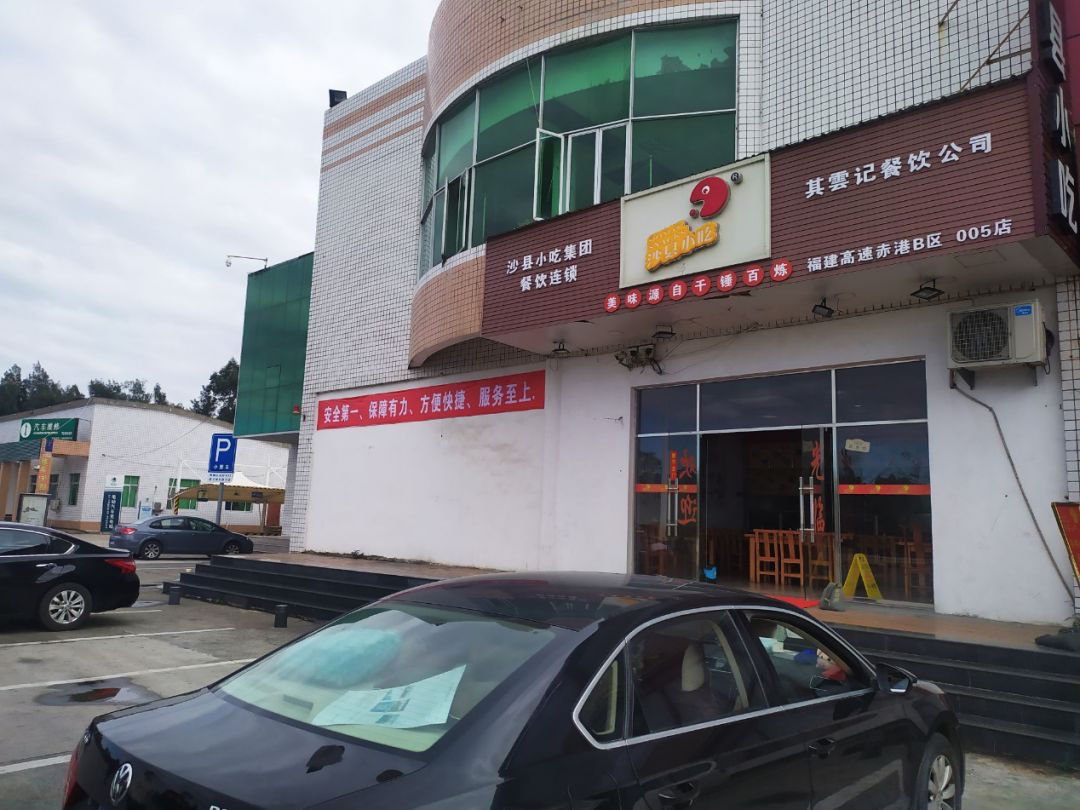 When I was charging here, the battery level of my XPeng was at 30%, which was just what XPeng advertised when 30% to 80% is needed to charge within 30 minutes. This charging station had only my car and a 120 kW fast charging pile, and all the objective conditions were met. The test result is as follows.
When I was charging here, the battery level of my XPeng was at 30%, which was just what XPeng advertised when 30% to 80% is needed to charge within 30 minutes. This charging station had only my car and a 120 kW fast charging pile, and all the objective conditions were met. The test result is as follows.
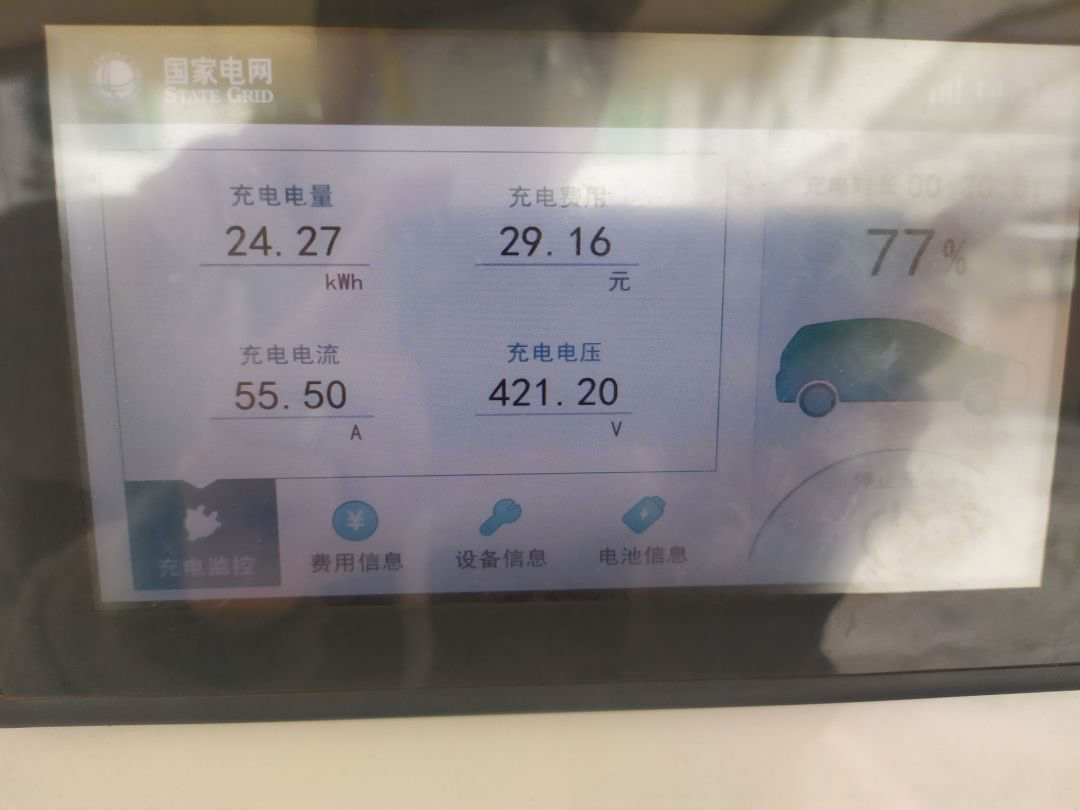
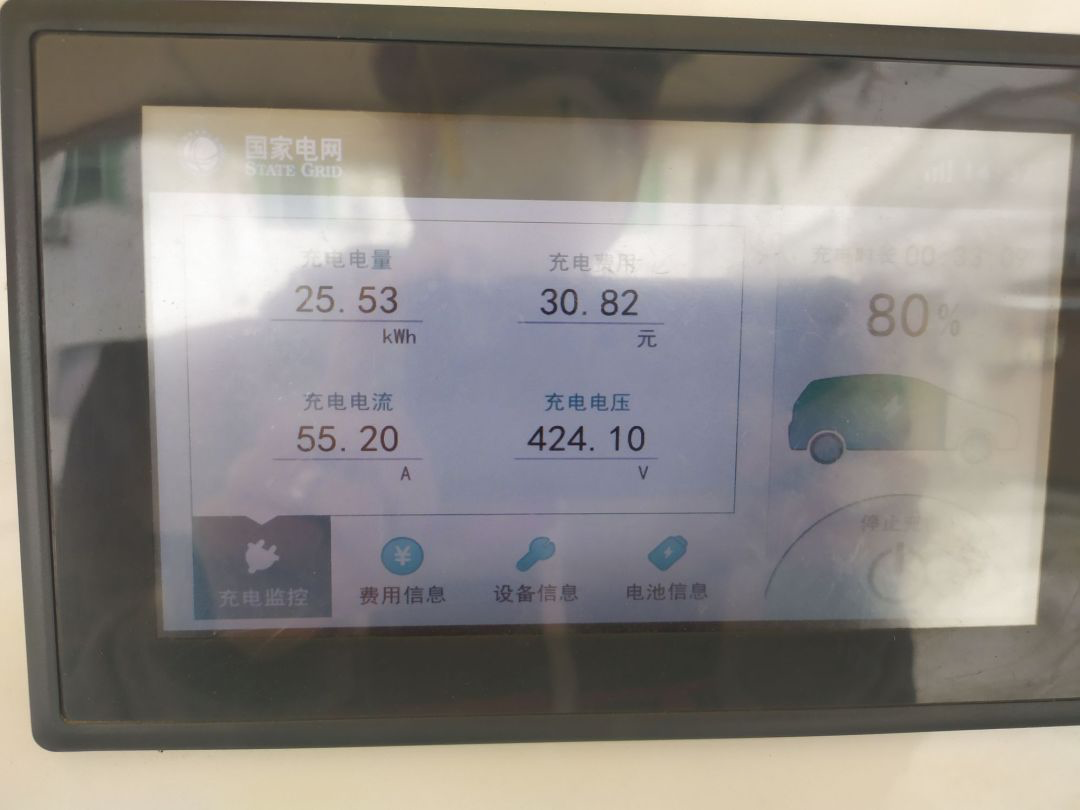
I charged 77% in 30 minutes and 80% in 33 minutes. This result is acceptable and it can be said that XPeng’s fast charging capability is commendable. After the battery was fully charged, I continued driving towards the north of Fujian.
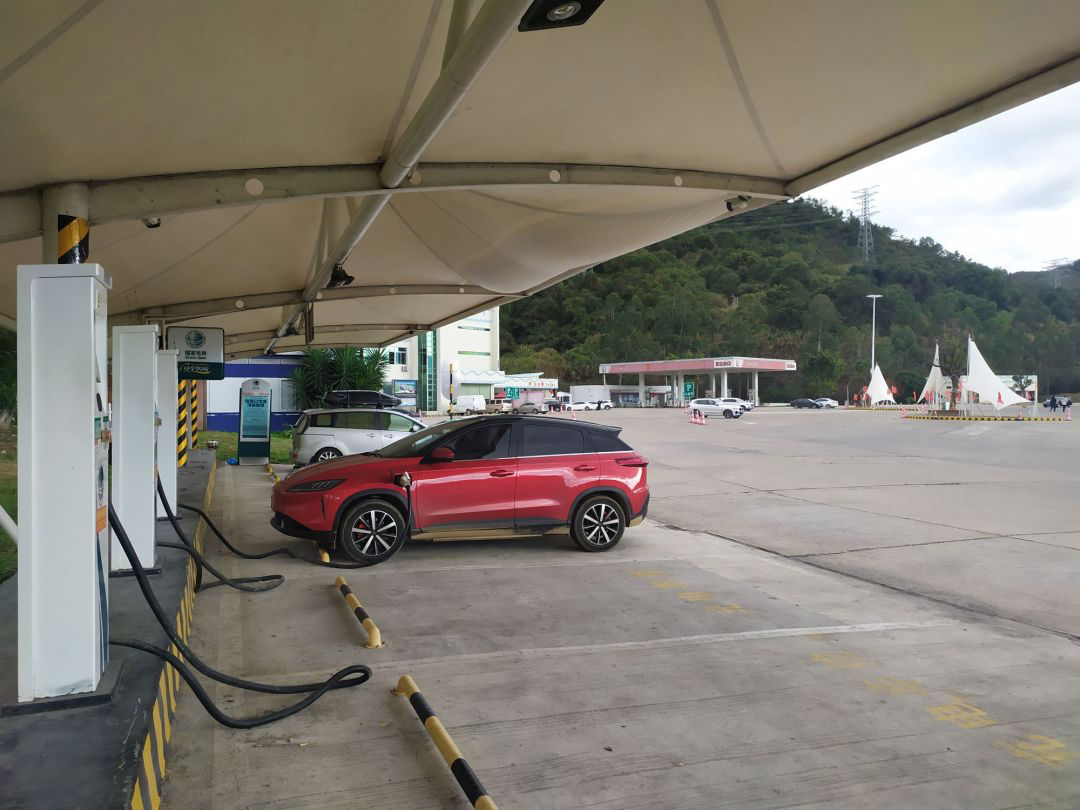
When I arrived at Lianjiang Service Area, I found that they had a McDonald’s which offered similar prices as the city and had super friendly service. I felt very satisfied while eating the hot and crispy fries.
The charging piles in Fujian are characterized by a long charging cable, unlike those in Jiangsu and Zhejiang where even a slight deviation could render them unusable.
This service area was 130 km from Xiapu, where I really wanted to see the sunset there. But it was already 4 o’clock by the time I arrived. Could I make it in time? Let’s give it a try anyway.
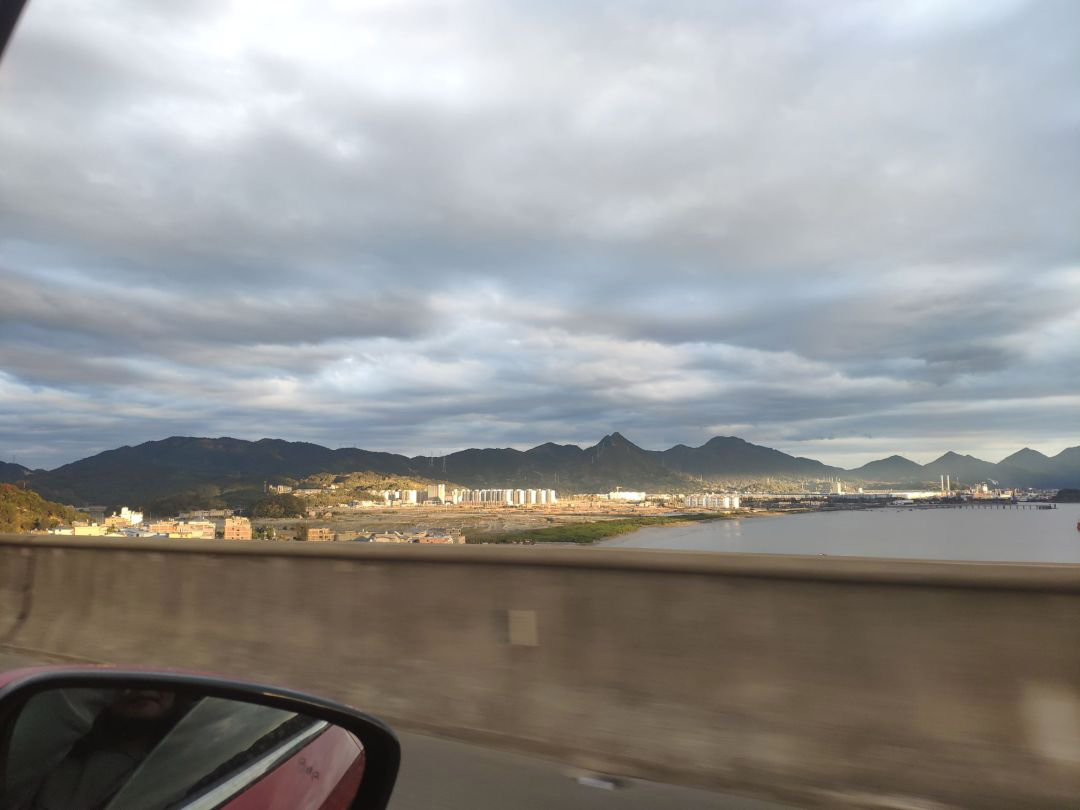
I was speeding all the way and when I was close to Xiapu, with about 10 km to go, the sun had begun to set. I saw the golden rays of sunset shining on the small city, with its beauty beyond words.
Unfortunately, it was impossible to reach Xiapu Beach before the sun set at that distance, so we had to change our destination and head straight to Fuding.
When I arrived at the intersection to Xiapu, it was already dark, so I decided to go to the previous service area Huyu Island to recharge. I thought this service area would be on an island by the sea where I could enjoy the scenery while recharging, but when I got there, I saw only a NIO vehicle and complete darkness.
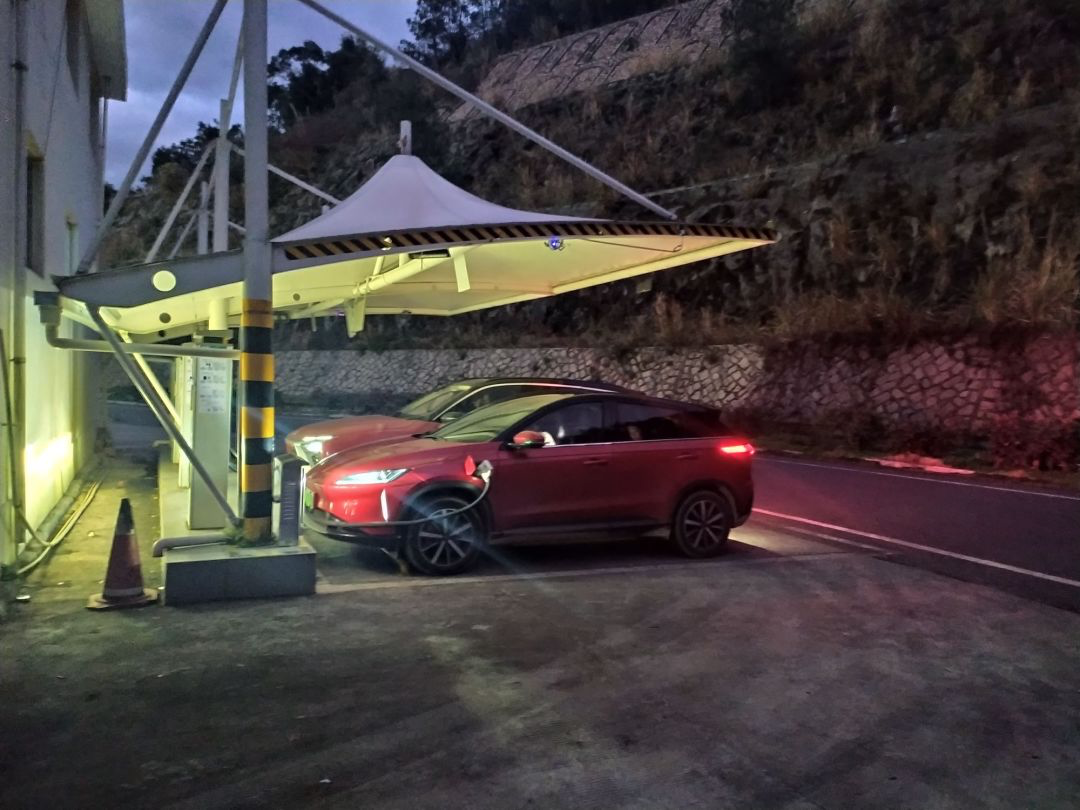 NIO ES8 in Mars Red is Big Bun’s favorite NIO color, but unfortunately its battery life is relatively short, and the charging stations’ No. 3 and No. 4 plugs are not available.
NIO ES8 in Mars Red is Big Bun’s favorite NIO color, but unfortunately its battery life is relatively short, and the charging stations’ No. 3 and No. 4 plugs are not available.
A friendly NIO owner suggested I use the No. 1 plug and we had a friendly conversation with masks at a distance of three meters.
After exchanging compliments, everyone expressed that cooperation among new forces is the trend. This is also the last charging station while crossing Fujian. After charging to full, I directly drove 90 km to Fuding City, ate delicious hot Dagumian noodles, slept comfortably, and thought Fujian is really good. I want to come back again.
Day 7 Fuding, Fujian → Changzhou, Jiangsu
After arriving in Fuding, I saw more and more highway intersections in Jiangsu were being closed at night in the hotel. I told my team members that it was all okay, but actually I was panicked.
I hurriedly had breakfast the next morning and set off for home. Fuding had imposed control measures on the highway entrances and exits, but only allowed people to enter, not to leave. Big Bun was confused and wondered why only entering was allowed. So, after traveling a short distance on the national road, I entered the highway from north of Fuding.
Not long after getting on the highway, I came to the border of Fujian and Zhejiang. Zhejiang Province also set up a checkpoint here, but it was not as strict as in Fujian. Only vehicles from Hubei needed to have their body temperature checked.
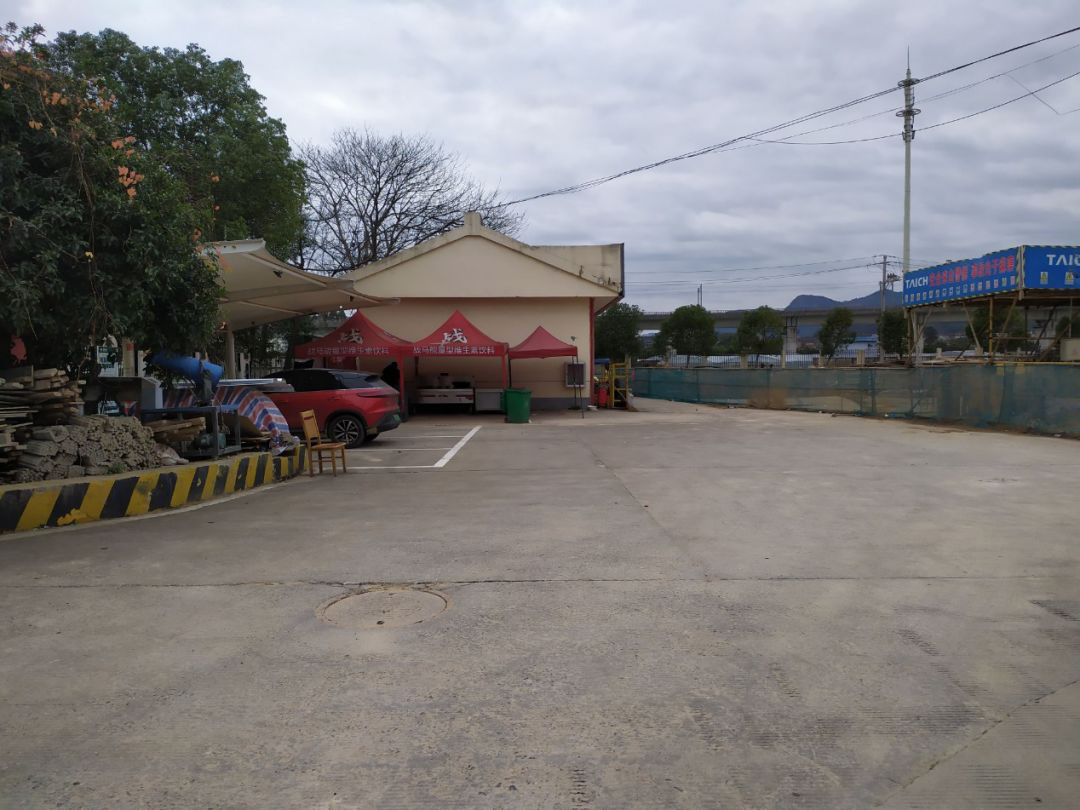
This is Cangnan Service Area, where aside from the gas and electric charging stations, other services such as restrooms and restaurants have been temporarily shut down. The charging station is hidden behind the gas station and accessible via a small road. It is difficult to find, but it also avoids the issue of occupied charging spots by petrol cars. Even after entering Zhejiang, it’s still dominated by State Grid, but the electricity price has risen to 1.6 yuan/kWh.
Charging here feels average, the power couldn’t go above 20 kW for half an hour, and only slowly increased to 40 kW. This is probably because the battery temperature is low and needs to be slowly heated up first. After the battery reaches the desired temperature, the charging power returns to normal.
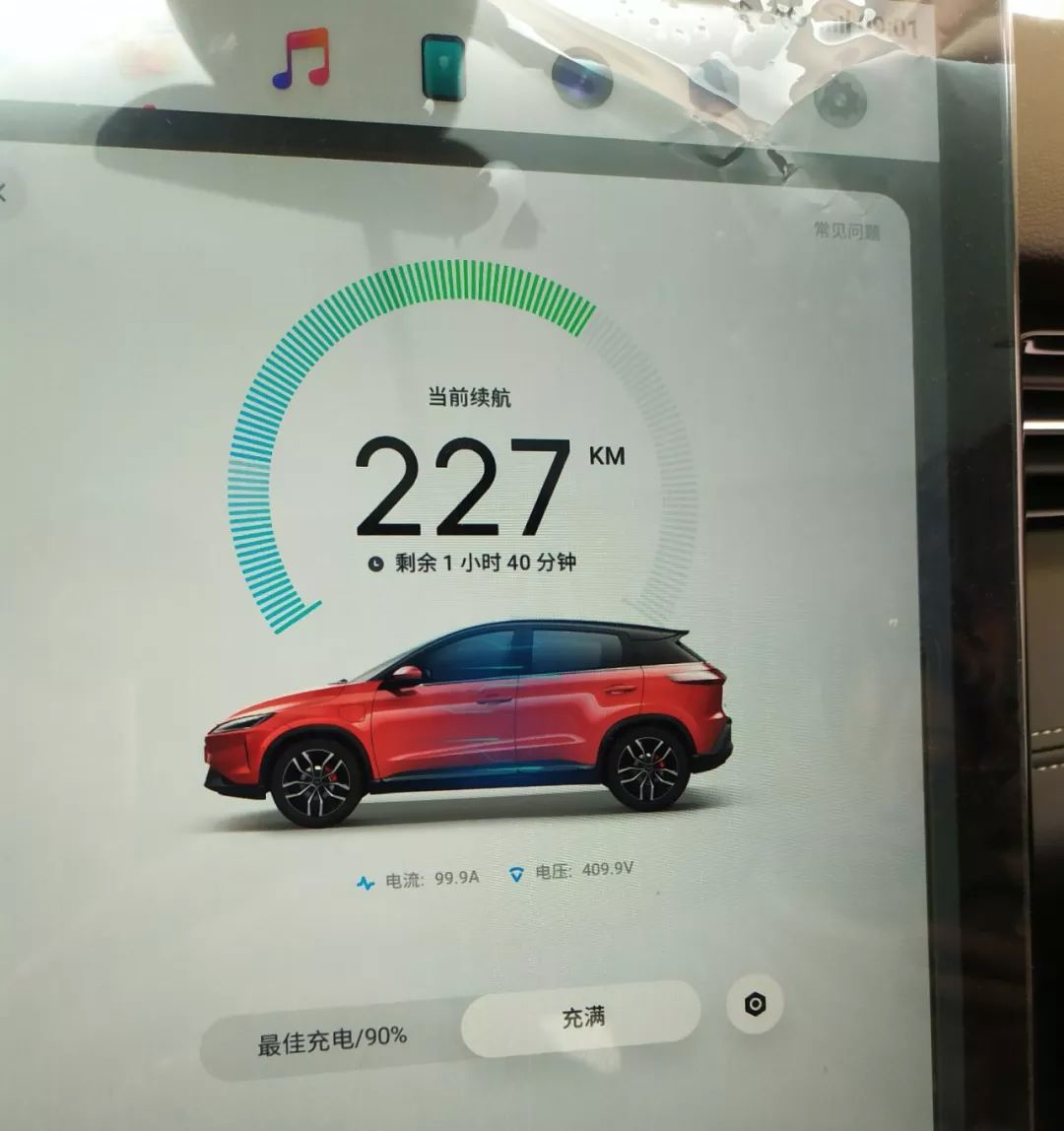
After fully charging, I continued on the journey. Compared to before, there were more and more cars on the highway in Zhejiang, and it began to feel a bit busy. It seems that Zhejiang’s companions are quite bold.
At 11:00 in the morning, we arrived at Shennongjia Service Area. Last year, the first long-distance trip I made after getting my car was to Shennongjia. This time, I returned after a year and felt that it was really fate.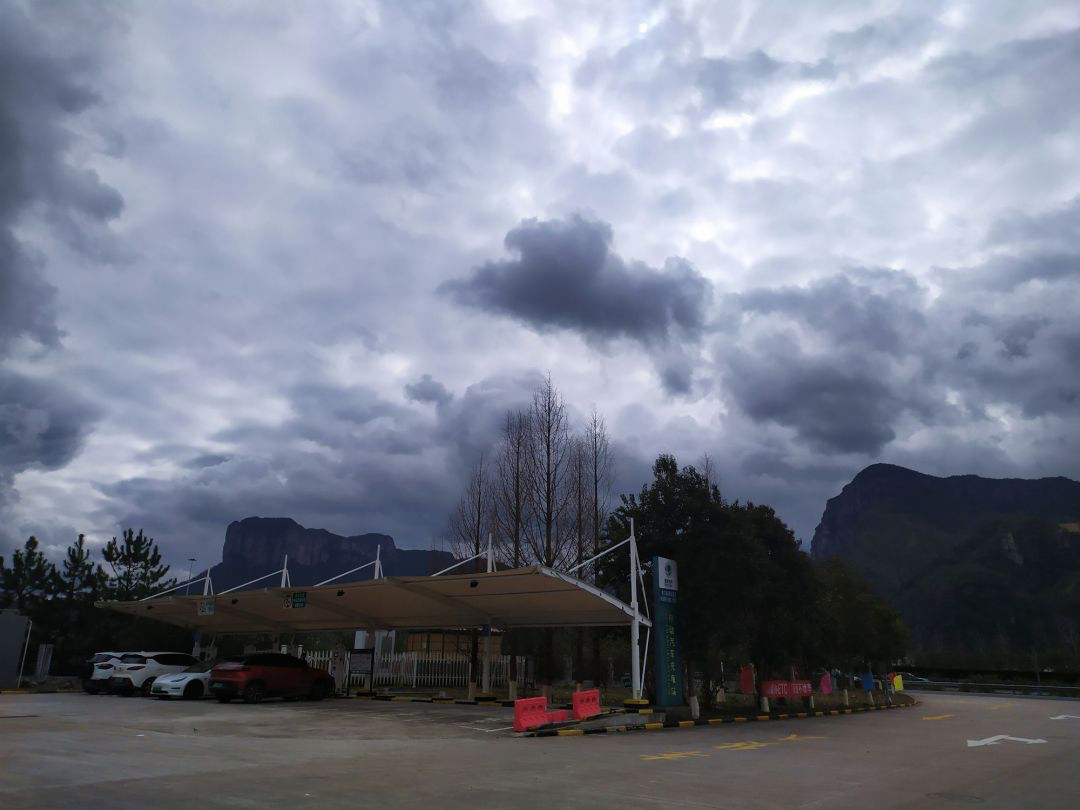
The first time I saw all the charging piles at Shenxianju service area full, BYD Yuan, GAC GE3, Model 3, and XPeng G3 were charging at the same time.
Looking closely at the power, XPeng and Tesla can both reach 60 kW at the highest power, while the other two are around 40 kW. When it reaches 70%, XPeng and Tesla both decrease to 40 kW, but what’s different is that XPeng will later decrease to 20 kW, while Tesla and BYD Yuan have not experienced any decline in the same proportion.
Later on, I left and I didn’t know what happened afterwards. When I left, there were two more cars waiting in line for charging.
I got back on my car and continued driving towards Jiaxing service area. There were more and more cars on the highway, and I had to be more careful driving, the speed was getting slower, but still better than usual.
Sitting in the back seat, I felt that the high-speed noise vibration and harshness (NVH) of XPeng G3 was really not good enough. The sound was a bit too loud. When people in the back seat were talking, people in the front seat might not be able to hear them.
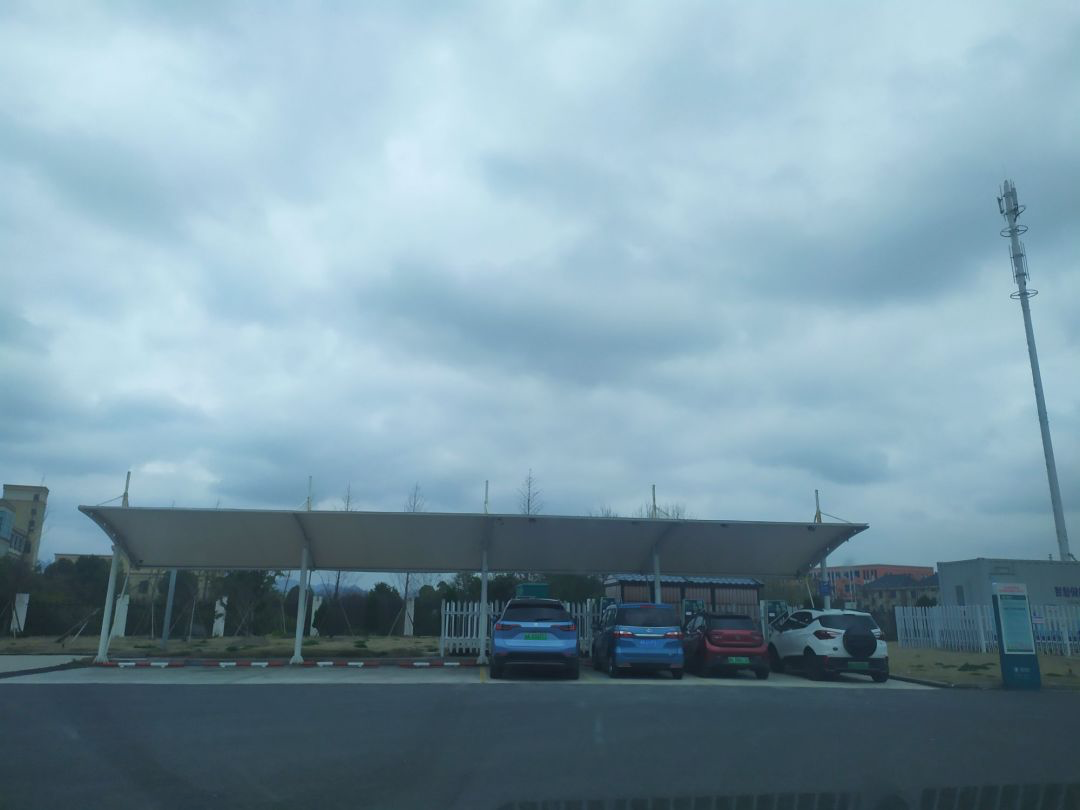
When I arrived at Xiaoshan service area, there were even more cars, and four cars were fully lined up. XPeng could only wait patiently. After a while, I became a bit impatient and wanted to charge XPeng’s supercharger at Zhejiang Agricultural Innovation Park. As a result, as soon as I was about to leave, NIO drove away, so I charged it immediately.
I chatted with an elderly man with a blue license plate next to me for a while. He bought a pure electric vehicle four years ago, with a range of 200 km, and now it can run 160-170 km, mainly for cargo transportation in the city, which is also good. When charging, I bought a cup of Starbucks coffee to drink.
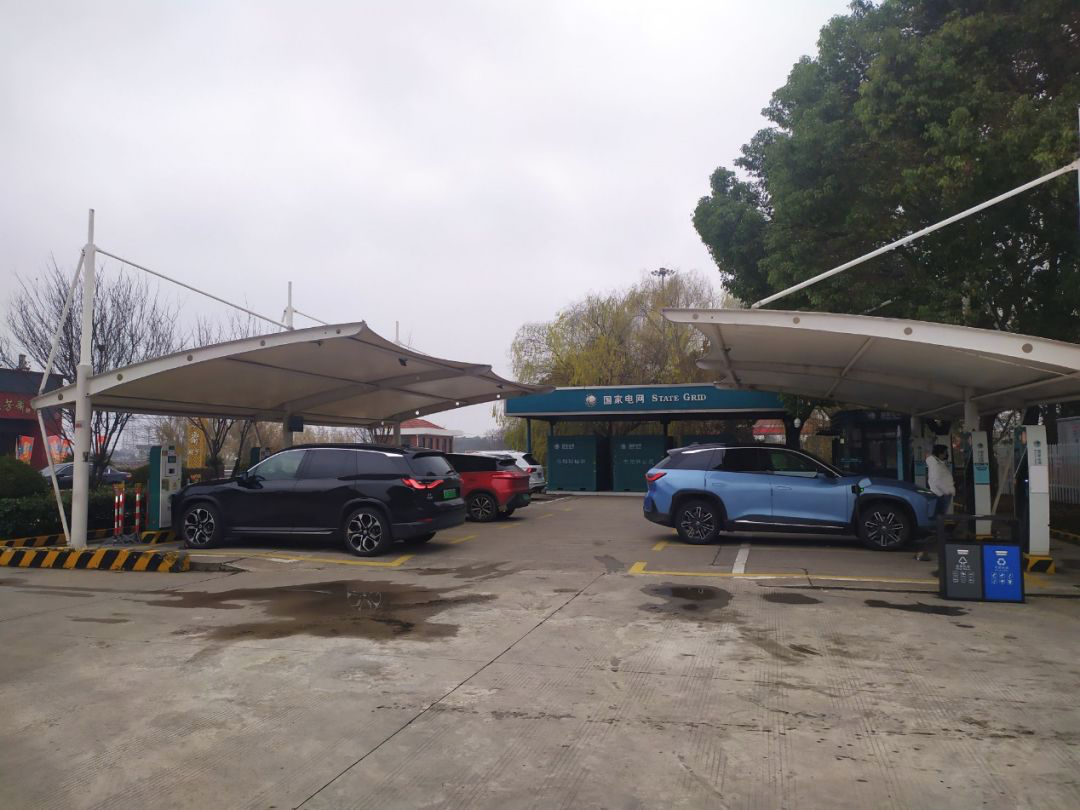
Continuing to move forward to Jiaxing service area, this service area has the most charging stations I’ve seen on the road, with 8 piles and a dedicated area. It seems that there are many electric vehicles in Jiaxing and its surrounding areas.
When I arrived, three NIOs, one Tesla, and one GAC were charging, it was bustling. However, due to the rampant epidemic, everyone just watched videos and played with their phones in the car, and there was no more communication.
According to the local NIO car owners, there is a famous No. 7 pile here, which can reach a super large current of 200 A on the NIO ES8. I specifically inserted it into No. 7 pile to experience it, and the speed was indeed very fast, reaching XPeng’s maximum 150 A current. It seems that the high-power pile is indeed well-deserved.

Continue the journey after fully charged, and quickly pass the border between Jiangsu and Zhejiang provinces. Unfortunately, Jiangsu did not set up inspection stations at the border like other provinces do, so each city in Jiangsu acts independently.
Since I didn’t want to charge during the trip, I had to drive at around 90-100 km/h, which is the economic speed, to head back home. With a 303 km range, I arrived at Changzhou service area with 50 km of range left, after driving 160 km.
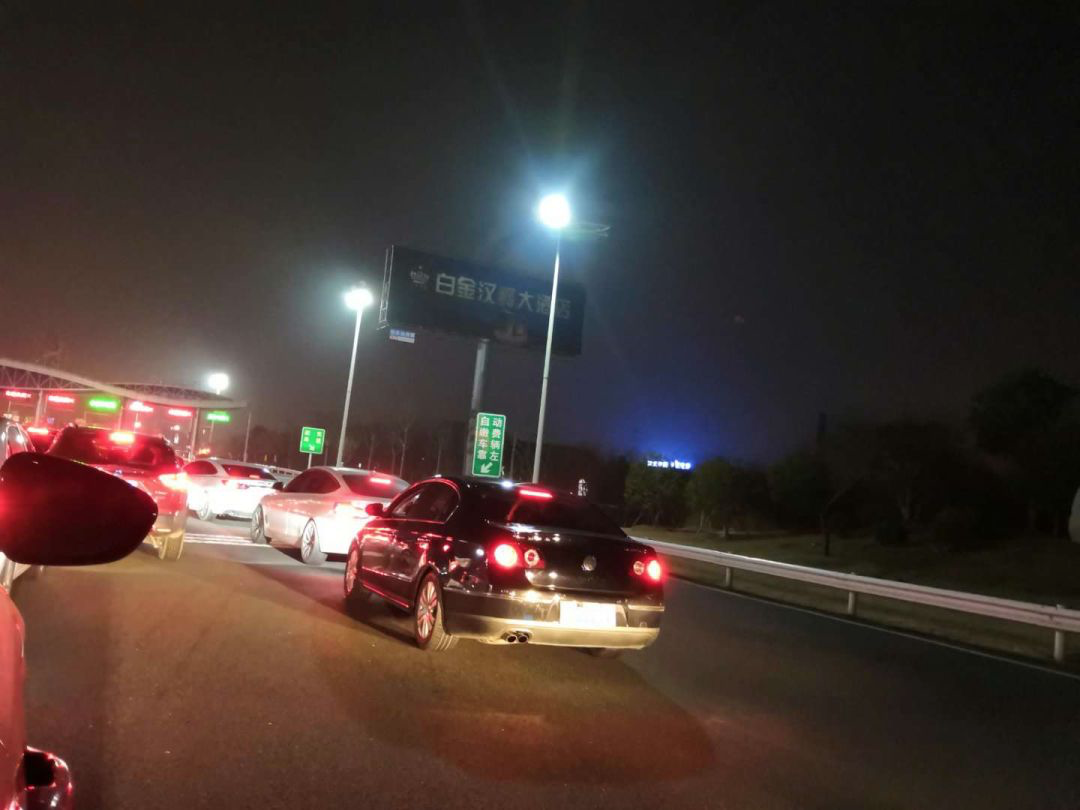
When I arrived at Qinglong Interchange in Changzhou, there were only two entrances and exits available, and the vehicles entering and exiting needed to be monitored. I thought they would inspect every vehicle, but it turned out to be random checks, which was a bit disappointing.
However, after a 7-day journey, covering 3600 km amidst the epidemic, and charging 22 times with a pounding heart, this has been a unique experience in my life. Who says the XPeng P7 cannot travel long distances? Thank you XPeng, thanks to my friends. We have proved that XPeng can do it, and it will definitely succeed!
Collection of Some Questions
- How much does electric battery range drop in cold weather, especially when parked in an outdoor parking lot?
When I traveled, the lowest temperature was about 0 degrees Celsius. Driving fully loaded with a speed of 110 km/h and turning on the air conditioning, the energy consumption was between 16 and 18 kWh / 100 km. The loss of range from parking outside at night is usually around 10 km.
- Is it difficult to charge electric cars? Especially for the XPeng P7 365 km version, is it not suitable for long-distance trips?
Actually, it’s not like that. Most people who ask this question have never driven an electric car. Nowadays, charging is very convenient in most places. For example, the service areas on highways covered by State Grid have fast-charging stations, and there are basically no parking spaces occupied by gasoline-powered cars.
Moreover, various commercial charging stations like Star Charge and Techrules are everywhere in cities, so there is basically no need to worry about charging. Moreover, XPeng P7 has XPILOT, Tesla has Autopilot, and NIO has NIOPilot, these assistive driving systems are really easy to use, and they save a lot of effort, especially when driving on highways.
- Is it worth buying an electric car?I have driven Chery, Buick, and Ford gasoline cars before, but I have to say that after driving an electric car, I can never go back to a gasoline car again. Personally, I think the current price-performance ratio of electric cars is still very high, whether in terms of the experience during use or the daily maintenance and energy costs, it can be said to be very attractive.
Moreover, there are suitable products at various price points. For example, I usually drive XiaoPeng G3, which costs a little over 100,000 yuan. My family member drives Ora R1, which costs around 80-90,000 yuan, and both of us think they are very suitable.
We drive about 3600 km per month, and the electricity bill is only about 130 yuan. Annual maintenance costs for both cars add up to 500 yuan. Isn’t this price-performance ratio amazing?
In conclusion
Indeed, including my relatives and friends, many people have misunderstandings about electric cars and think that they are not good for various reasons. However, I think that for anything, you have to try it to understand it. Electric cars are the same. Only by trying it will you truly discover its benefits.
In 2020, we faced many challenges. I hope we can all get through it together. The pandemic will surely pass, and good times will come again. When everything returns to normal, I will face warmth and set out again for a spiritual journey. Let’s all go electric and embark on this journey together.
This article is a translation by ChatGPT of a Chinese report from 42HOW. If you have any questions about it, please email bd@42how.com.
